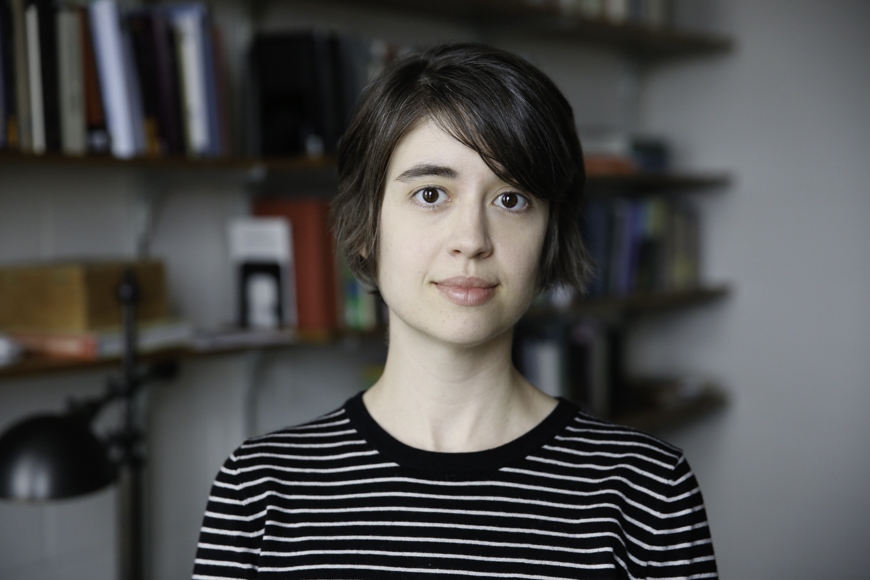Conway, Ontology, and the Early Modern Canon
What is the world made out of? Is there a single substance out of which all things are composed? Today, the ways in which Hobbes, Spinoza, and Descartes responded to such questions are a staple of an undergraduate education in philosophy. But very few students of philosophy—not to mention philosophers—have encountered Anne Finch Conway’s contributions to the ontological debates of the early modern period.
Philosophy professor Jessica Gordon-Roth is working to change that. Through careful historical scholarship, she seeks to recover this overlooked seventeenth-century thinker from the margins of the early modern canon. Taking seriously the ontological picture laid out in Conway’s treatise The Principles of the Most Ancient and Modern Philosophy, Gordon-Roth endeavors to reconstruct her views and arguments, comparing them to those of her more well-known male contemporaries.
One Substance, or Three?
In her most recent article, forthcoming in the Journal of the American Philosophical Association, Gordon-Roth takes up the following question: What kind of monist is Anne Conway? In ontology, the field of philosophy that deals with questions of existence and being, monism is the position that there is one thing, or substance, composing the world. Conway, Gordon-Roth explains, is often held to be a monist. But she is quick to add that deciphering the details of Conway’s monism is no easy task.
Whereas Spinoza’s monism posited an identity between God and the world, Conway seeks to keep these entities apart. “She’s offering an ontological picture deeply colored by her theological views,” says Gordon-Roth, “and she takes issue with Spinoza, for whom there is no stopgap between God and the world he creates.” For Conway, God must be separate from the created world, for, if they were one and the same, then the immoral features of the world would be attributes of God, which she takes to be impossible.
Further complicating the picture, Conway holds that between God and his creations stands Christ, which, for Conway, refers not only to the flesh-and-blood human being Jesus of Nazareth but also to God’s plan for the universe. Christ, then, is for Conway a kind of distinct intermediary between God and his creatures.
Thus, it might appear that Conway is not so much a monist but a trialist, taking the world to be composed of three substances: God, Christ, and the created world. Gordon-Roth admits that there is some truth to this: “Her overall ontology certainly consists of three different kinds of substances,” she explains, “and in order for her to maintain the stopgap between God and creatures, these three entities cannot be simply three distinct things, but must be different kinds of substances.”
But despite her apparent trialism, Gordon-Roth points out that there is still a sense in which Conway can be described as a monist: “It might look like there’s great variation in the created world,” she explains, “but for Conway, all of God’s creations are composed of spirit.” Though her overall ontology is trialist, then, Conway is also a monist with respect to the created world.
Gordon-Roth explains that Conway’s monist ontology of the created world is deeply connected to her moral theory and conception of divine punishment and reward. “The more moral a creature is, the moral-spiritual is the substance out of which it is composed,” she says. According to Conway, creatures—human beings, animals, and even inanimate objects like rocks—are reborn upon their death or destruction as new creatures through a process she calls transmutation. An especially moral horse, for example, might be reborn as a human being, its spirit becoming more ethereal. The spirit of an immoral human being, on the other hand, will become denser and crasser, coalescing in the form of some lesser creature like a slug or a rock.
Two Kinds of Monism
But the sense in which Conway is simultaneously a monist and a trialist is not the only complication that arises in deciphering Conway’s ontology. Once we accept that Conway is a monist with respect to the created world, a further question arises: What does the “oneness” of Conway’s monism apply to? Is there only one existing substance? Or are there multiple existing things each made up of the same type of substance? Though it is generally acknowledged that Conway is a monist with respect to the created world, Gordon-Roth points out that this further question as to what her monism amounts to has flown largely under the scholarly radar. Thus, in her article, she seeks to problematize the issue, paving the way for future research.
Gordon-Roth terms those who, like Spinoza, hold that there is only one existing substance existence-monists and those who, like Hobbes, believe that there are multiple existing things each composed of the same type of substance type-monists. “Conway doesn’t explicitly hold either view,” Gordon-Roth explains, “and there is textual evidence for attributing both kinds of monism to her.”
Rather than arguing that Conway subscribes to one or another kind of monism, Gordon-Roth suggests that we might attribute to her a kind of “oscillating position.” She proposes that Conway’s apparent vacillation between existence- and type-monism is not an inconsistency but instead reflective of her overall ontological picture and God’s role within it. “From our own perspective as God’s creatures, everything in the created world is a distinct entity, composed of the same type of spiritual substance,” she explains. From God’s perspective, on the other hand, the created world is a single existing substance. Thus, the question as to what the “oneness” of Conway’s monism applies to —existence or types—might depend upon how one frames the question. Seen through the lens of creatures, Conway’s ontological picture is type-monist. But from a literal God’s-eye-view of the created world, there is only one existing spiritual substance.
Recovery and Expansion
Gordon-Roth approaches Conway’s work as any historian of philosophy would approach the texts of Hobbes, Spinoza, or Descartes. But she points out that this is not how scholarship on Conway has always been done, due in part to the interdisciplinary nature of academic research on early modern women. “We’re just beginning to get critical, philosophical scholarship on her work,” she says. Though Gordon-Roth does not deny that there is good, careful scholarship on Conway, she points out that until recently much of the literature—as with that on early modern women more generally—has been more concerned with reading facts about her life into her work than grappling with her arguments, purporting to explain her ontology in terms of her debilitating headaches, or chalking up her vitalism to the fact that she was a woman.
But Gordon-Roth argues that to personalize the philosophical texts of early modern women is contrary to the philosopher’s principle that arguments should stand on their own merits. We do not attribute Hobbes’ materialism to his being a man, and nor should historians of philosophy understand Conway’s vitalism as an expression of her femininity. In personalizing the philosophical texts of early modern women, Gordon-Roth maintains that we run the risk, not of expanding the canon, but of splitting it: Philosophy, in which arguments are evaluated by their own merits, and Women’s Philosophy, where personalizing ad hominem passes for philosophical scholarship. Such a division offers nothing more than a false impression of the early modern period. After all, Conway was not doing “women’s philosophy,” but philosophy simpliciter. As Gordon-Roth puts it, “In Conway, you find someone who is doing metaphysics and epistemology as her male peers were doing it, and it’s historically irresponsible to exclude women like her from the history of philosophy, who were contributing to philosophical debate all along.”
This story was written by an undergraduate student content creator in CLAgency. Meet the team.



